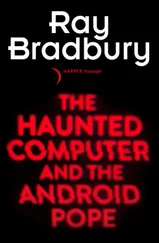13. 43.13 Rescue at Rigel, Automated Simulations
14. 41.88 Datestones of Ryn, Automated Simulations
15. 41.88 CCA Data Management System , Personal Software
16. 40.31 Super Invader, Creative Computing Software
17. 37.81 Wilderness Campaign, Synergistic Software
18. 37.50 Bill Budge's 3-D Graphics System , California Pacific
19. 36.25 EasyWriter, Information Unlimited
20. 33.75 Asteroids in Space, Quality Software
21. 33.44 Computer Bismark, Strategic Simulations
22. 31.88 Apple Writer, Apple Computer
31.88 Gammon Gambler, Personal Software
24. 31.25 Scott Adams’s Adventures, Creative Computing Software and Adventure International
25. 29.69 Computer Ambush, Strategic Simulations
26. 28.44 Tuesday Night Football, Shoestring Software
27. 24.06 Apple-Doc, Southwestern Data Systems
28. 24.06 Tranquility Base, Stoneware
29. 22.50 The Controller, Apple Computer
30. 22.50 Apple Plot, Apple Computer
Permission to reprint granted by Margot Comstock, Softalk Magazine.
The list was extremely useful to everyone in the software industry. For Gary and me, it was particularly so. It told us a lot that we needed to know about the market—how we were doing vis-a-vis everyone else, what kinds of products were selling, and how many units we should be able to sell. It was noteworthy, for example, that only five of the thirty topselling programs could be considered business-oriented. The major market was oriented toward games. Even Personal Software, the marketers of VisiCalc, had a game program on the chart. It was equally noteworthy that lots of little publishers were outselling Apple with many of their products. Clearly the market was open to new products. That gave us hope.
But the Tommerviks gave us more than hope—they gave us an opportunity to get into the market. We had sent them copies of our games to review for their October 1980 issue. Shortly after that issue came out, our phone in Eugene started ringing. Dealer after dealer called to say that they had heard about our product line from the Tommerviks and would like to place an order. The afternoon basketball games disappeared. Our list of active customers tripled in a month, and most of these new customers claimed to have heard about us from Al or Margot.
In addition to running a magazine that kept people informed about what was happening in the market, the Tommerviks brought many of the game publishers together on a social basis. Since Al and Margot talked daily with people all over the country, they were better informed than any of us, and they came to know all of us with their frequent calls inquiring about new products and plans. They usually hosted a dinner bash at some restaurant during each of the major trade shows. Some of those dinners were quite memorable.
There was the evening that about thirty of the attendees/exhibitors at the 1982 San Francisco Computer Faire descended on Alioto’s, a well-known and perpetually crowded restaurant on Fisherman’s Wharf. One of our number, a new employee at Apple whom we shall call George, betrayed his New York origins when he took charge of the negotiations with the maitre d’. Upon being told that there would be a forty-five-minute wait, George beckoned the man over to the side, slipped a bill into his hand (we learned later that it was a ten—the man was as cheap as he was brassy!), and, as he gripped the maitre d’s hand with both of his, said in a loud voice that he was sure that the wait could be shorter than that.
The maitre d’ eyed George stonily and turned away. Kurt Wohlner, art director at Softalk, turned to me and said, “I have a bad feeling about this. Why don’t we go somewhere else?” So a group of about ten of us split off and went over to a nearby restaurant where we were quickly seated and enjoyed a delicious dinner. Back at Alioto’s, a miserable group of dead-tired Computer Faire attendees waited more than two hours for a table. They looked pretty glum the next morning.
But that was nothing compared with the 1984 Computer Faire debacle. This time I had better leave the restaurant nameless. About fifty of us headed off for drinks and dinner after an exhausting, exciting day at the Faire. Margot, as usual, led the way. It wasn’t easy to find a restaurant that would handle that many people on short notice, but Margot managed to find one down on the waterfront. The drinks were good and in plentiful supply. But I don’t think that anyone noticed until around 10 o’clock that the food service was pretty slow. Then, around 10:30, there was a lot of rushing to and fro in the vicinity of the kitchen. The food was on the way, we were reassured, but some of our spies were dubious. One claimed to have looked into the kitchen and said he saw the food covered with white foam. He hypothesized that there had been a kitchen fire and proposed that the management didn’t want to admit it for fear of losing the customers.
In fact, the management did admit it, but not until after midnight, by which time the whole group was pretty pickled. Only utter exhaustion kept us from getting ugly. Most of us slunk away hungry. A few brave souls found a twenty-four-hour pizza parlor and buried their miseries in sausage and pepperoni.
Those two dinners were the exceptions, however. Most of them were tremendous fun. Even the disasters seem to knit us closer together. As the Apple market gradually became more “button-down,” and the hobbyists who had once dominated it became less significant to the dealers and distributors, the magazine that spoke to the hobbyist in all of us became the focal point about which the social part of our business lives revolved.
The Tommerviks started other magazines for the IBM PC and the Macintosh. But these never achieved the status of Softalk. The Tommerviks were perfectly in tune with the spirit of the home Apple purchaser—I don’t think that they ever developed the same rapport with those other groups of users. In many ways, they were also the social center of the group of software publishers who were most closely associated with Apple computers and game programs. Like many others in the microcomputer industry, the Tommerviks’ lives and business changed drastically after the IBM PC’s entrance changed the nature of the industry.
Margot Tommervik was especially close to the people at Penguin Software, and so even though they were located in Illinois instead of in California, they joined with the rest of us in many of our activities and became an important part of the Brotherhood’s small group of friends.
Indeed, while most of the cottage software companies are located on the West Coast, there were other pockets of intense activity scattered across the country. Adventure International, one of the first software publishers for the home market, is in Florida. Sir-Tech is in New York. MicroLab is located in Illinois. Several of the successful computer magazines were located in the East, and most of them spawned further computer activity in their areas.
One of the real hotbeds of interest in microcomputers was New Hampshire. Magazines such as Byte, Microcomputer, 80 Micro, and Softside originated there. Softside was one of the many enterprises of an entrepreneur from Milford, New Hampshire, named Robert Robitaille, whose other ventures include a mail-order computer sales company called Hardside and a software company called The Software Exchange.
In fact, The Software Exchange was one of the three companies (the others were Adventure International and Cybernautics) to which I submitted my first marketable program, Galactic Empire, for publication. I received respectable royalty checks from The Software Exchange for a couple of years. They stopped then, except for one more or less random check nine months later, and I assumed that the company was no longer in business.
Читать дальше










